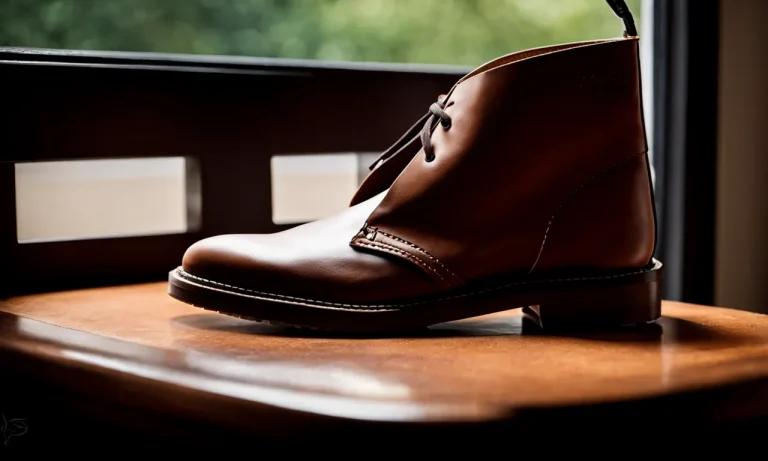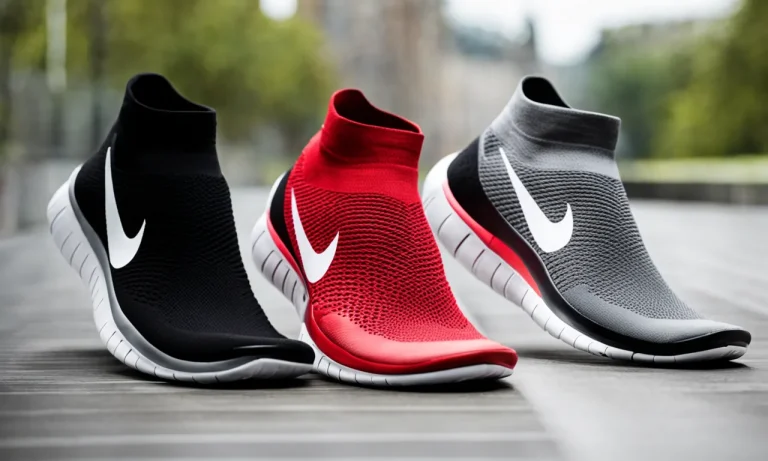Running is one of the most popular forms of exercise, allowing people to stay active and improve their cardiovascular health. With the rise of running’s popularity, the market has exploded with specialized running shoes to meet every runner’s needs.
If you’ve heard the term ‘stability running shoe’ and want to learn more about this type of footwear, you’ve come to the right place.
In short, stability running shoes are designed to provide moderate support and motion control for runners who need more than basic cushioning from their shoes. Stability shoes help prevent excess movement and overpronation, which is when the foot rolls too far inward upon landing.
What is Pronation and Overpronation?
Pronation is the natural inward rolling motion of the foot after landing. It is a normal and necessary movement that helps absorb shock and distribute the forces of impact evenly. When the foot pronates, the arch of the foot flattens, allowing the foot to adapt to different surfaces and absorb the impact of each step.
However, overpronation occurs when the foot rolls too far inward, resulting in instability. This excessive inward rolling can put strain on the foot and lower leg, affecting the alignment of the entire body.
Overpronation is a common issue, affecting many runners and individuals with flat feet or low arches.
Overpronation can lead to foot, ankle, knee, hip, and back pain if not corrected.
If left unaddressed, overpronation can lead to a variety of issues and discomfort throughout the body. The excessive inward rolling can cause the feet to become misaligned, leading to foot pain, plantar fasciitis, and Achilles tendonitis.
The instability can also contribute to ankle sprains and shin splints.
Furthermore, overpronation can affect the alignment of the knees, hips, and lower back. The misalignment can cause increased stress on these areas, leading to knee pain, hip pain, and lower back pain. It can also contribute to conditions such as iliotibial band syndrome and patellofemoral pain syndrome.
To prevent or correct overpronation, it is important to wear appropriate footwear, such as stability running shoes. These shoes are specifically designed to provide support and control for overpronation.
They feature features such as firmer midsoles, supportive arches, and pronation control technology to help correct the excessive inward rolling motion.
It is recommended to consult with a podiatrist or a knowledgeable shoe specialist to determine the best type of running shoe for your specific needs. They can assess your gait and recommend the appropriate footwear to help correct overpronation and provide stability and support during running or other physical activities.
Signs That You May Need Stability Running Shoes
When it comes to running, having the right pair of shoes can make all the difference in your performance and overall comfort. If you’re experiencing certain issues while running, it may be a sign that you need stability running shoes. Here are some common signs to look out for:
Flat feet or fallen arches
If you have flat feet or fallen arches, it means that the arches on the inside of your feet are low or nonexistent. This can lead to overpronation, which is when your feet roll inward excessively when running.
Stability running shoes are designed with features such as medial support and arch support to help correct this issue and provide the necessary stability for your feet.
Ankles that roll inward significantly when running
Another sign that you may need stability running shoes is if you have ankles that roll inward significantly, also known as overpronation. Overpronation can put excessive strain on your ankles and lead to injuries such as shin splints or ankle sprains.
Stability running shoes are specifically designed to provide extra support and stability to prevent your ankles from rolling inward too much.
Lower back, hip or knee pain when running
If you experience lower back, hip, or knee pain when running, it could be a sign that you’re not getting enough support from your current running shoes. Stability running shoes are designed to help correct your gait and provide the necessary cushioning and support to alleviate these types of pain.
They can help distribute the impact of each stride more evenly and reduce the stress on your joints.
Regular running shoes wear unevenly on the inner edges
Take a look at the soles of your regular running shoes. If you notice that they wear down more on the inner edges, it could be a sign that you’re overpronating. Overpronation can cause the inner edges of your shoes to wear down faster than the rest of the sole.
Switching to stability running shoes can help correct your gait and prevent this uneven wear.
Remember, if you’re experiencing any of these signs, it’s important to consult with a professional, such as a podiatrist or a running shoe specialist, to determine if stability running shoes are the right choice for you.
They can help assess your gait and provide personalized recommendations to ensure that you have the best running experience possible.
Key Features of Stability Running Shoes
Firm midsole to control pronation
One of the key features of stability running shoes is a firm midsole that helps control pronation. Pronation refers to the natural inward rolling motion of the foot during the running gait cycle. However, excessive pronation can lead to imbalances and potential injuries.
Stability shoes are designed with a firmer midsole to provide support and control the inward rolling motion, ensuring a more stable and efficient stride. This feature is particularly beneficial for runners who overpronate, where the foot rolls excessively inward.
Reinforcement on the inner side of the midsole
Stability running shoes also feature reinforcement on the inner side of the midsole. This reinforcement, commonly known as a medial post, is a denser material that provides additional support to the arch of the foot and helps prevent overpronation.
The medial post is typically made of a firmer foam or a thermoplastic material and is strategically placed along the inner edge of the shoe to counteract excessive inward rolling. It acts as a guide for the foot, promoting a more neutral and efficient running motion.
Straight shape through the heel
Another important feature of stability running shoes is a straight shape through the heel. This design element helps align the foot and ankle in a neutral position, reducing stress on the joints and promoting a more efficient running stride.
The straight shape through the heel also helps prevent overpronation, ensuring that the foot maintains a stable and balanced position with each step. Runners with flat or low arches often benefit from this feature, as it provides the necessary support and stability to the foot.
Medial post to prevent inward rolling of the foot
In addition to the reinforcement on the inner side of the midsole, stability running shoes may also have a medial post that extends from the midsole to the outsole. This extended medial post further helps prevent the inward rolling of the foot and provides enhanced stability and control.
The size and shape of the medial post can vary depending on the brand and model of the shoe, with some designs offering a firmer and more pronounced post for greater support. It is important to note that the presence of a medial post does not necessarily mean a shoe is a stability shoe, as other factors like cushioning and flexibility also play a role in determining the shoe’s overall stability.
When choosing a stability running shoe, it is essential to consider these key features to find the best fit and support for your running needs. Remember to consult with a knowledgeable running shoe specialist or visit reputable running shoe websites like Runner’s World or Road Runner Sports for expert advice and guidance.
Differences Between Stability and Neutral Running Shoes
Stability shoes offer motion control, neutral shoes have basic cushioning
When it comes to choosing the right running shoe, one of the key factors to consider is the level of support and cushioning it provides. Stability shoes are specifically designed for runners who overpronate, meaning their feet roll excessively inward during the running motion.
These shoes offer motion control features such as firmer midsoles and added support in the arch area, which helps to correct the overpronation and provide a more stable running experience. On the other hand, neutral running shoes are suitable for runners with a more natural gait and do not require as much motion control.
They offer basic cushioning to provide a comfortable and responsive ride without interfering with the foot’s natural movement.
Stability shoes limit excess inward foot rolling, neutral shoes allow natural pronation
The main difference between stability and neutral running shoes lies in how they address the issue of foot rolling. Stability shoes are designed to limit excess inward foot rolling, which can put stress on the ankles and knees and lead to injuries.
These shoes typically feature a medial post, a firmer section of foam on the inner side of the midsole, which helps to prevent overpronation and guide the foot towards a more neutral position. On the other hand, neutral running shoes allow for natural pronation, which is the foot’s natural inward rolling motion as it absorbs shock.
They provide a more flexible and unrestricted feel, allowing the foot to move in its most natural and efficient way.
Stability shoes have features like medial posts, neutral shoes do not
In addition to their different approaches to motion control, stability and neutral running shoes also differ in terms of their specific features. Stability shoes, as mentioned earlier, often incorporate a medial post to provide extra support and stability for overpronators.
This feature is typically not found in neutral shoes, which prioritize flexibility and freedom of movement. Instead, neutral shoes focus on providing cushioning and comfort without interfering with the foot’s natural biomechanics.
It’s important to consider your specific running needs and foot type when choosing between stability and neutral shoes to ensure the best fit and support for your unique running style.
For more information on choosing the right running shoes, you can visit authoritative websites like Runner’s World or Road Runner Sports. These websites offer comprehensive guides and reviews to help you make an informed decision based on your individual needs and preferences.
Finding the Right Stability Shoe for Your Needs
Consider your arch type, pronation needs, and gait analysis
When looking for a stability running shoe, it’s important to consider factors such as your arch type, pronation needs, and gait analysis. Understanding your arch type can help determine the level of support you need in a shoe.
Those with low arches may require more stability, while those with high arches may need more cushioning. Pronation refers to the natural inward rolling motion of the foot as it lands and pushes off the ground.
If you overpronate or underpronate, finding a shoe with the right amount of stability can help correct your gait and prevent injuries. Getting a gait analysis done by a professional can provide valuable insights into your running style and help guide you towards the right stability shoe.
Try on shoes at the end of the day when feet are most swollen
When trying on stability running shoes, it’s best to do so at the end of the day when your feet are most swollen. This will ensure that you get the most accurate fit. Remember, your feet can change in size throughout the day, especially after a run or a long day of walking.
By trying on shoes when your feet are at their largest, you can avoid buying a pair that feels too tight or uncomfortable during your workouts.
Ensure proper toe box width and heel lockdown
Proper fit is crucial when it comes to stability shoes. The toe box should provide enough room for your toes to splay naturally without feeling cramped. It’s important to have at least a thumb’s width of space between your longest toe and the end of the shoe.
Additionally, ensure that the shoe provides a secure heel lockdown. This means that your heel should feel snug and not slip out of the shoe when walking or running. A shoe that fits properly will provide the necessary stability and support for your feet.
Break in slowly to allow your feet to adjust to new support
Once you’ve found the right stability shoe, it’s important to break them in slowly. This allows your feet to adjust to the new level of support and prevents discomfort or potential injuries. Start by wearing the shoes for short periods of time, gradually increasing the duration as your feet adapt.
It’s normal to experience some initial discomfort or tightness, but if you experience persistent pain, it may be a sign that the shoes are not the right fit for you. Be patient and give your feet time to adjust to the new support.
Remember, finding the right stability running shoe is essential for preventing injuries and ensuring optimal performance. By considering your arch type, pronation needs, and gait analysis, trying on shoes at the end of the day, ensuring proper toe box width and heel lockdown, and breaking in the shoes slowly, you can find the perfect stability shoe that meets your needs and enhances your running experience.
Conclusion
Stability running shoes are designed for runners who overpronate and require support to limit excess inward rolling of the foot. Key features like medial posts and firm midsoles help control pronation and create a more stable ride.
Analyzing your gait and fitting shoes correctly ensures you find the right stability shoe to meet your needs. With the proper footwear, overpronators can run comfortably while reducing their risk of developing pain and injuries.






